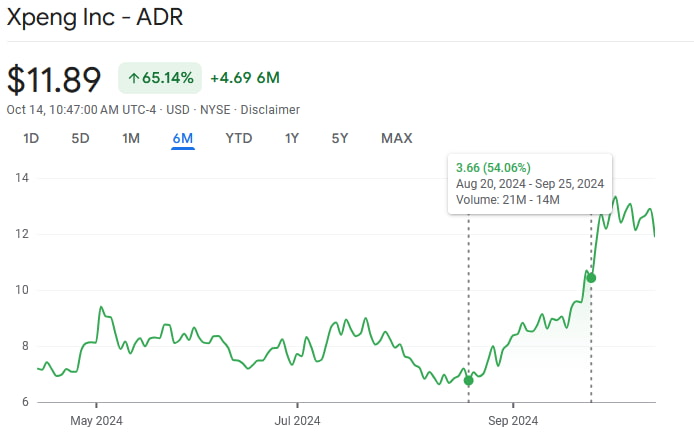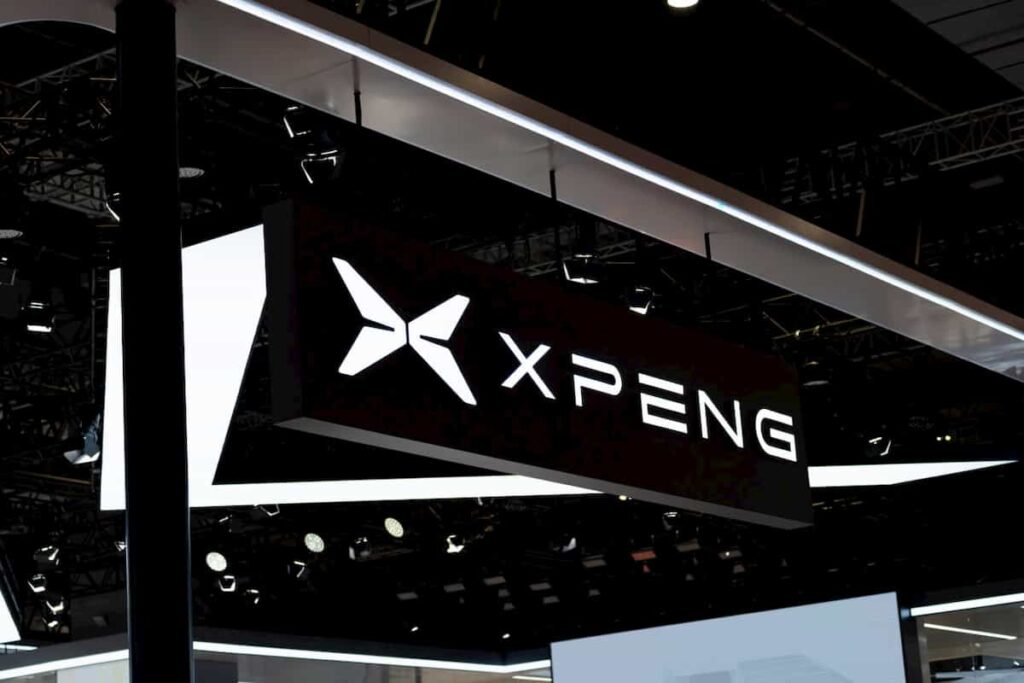During the premarket trading session on October 14, Chinese automaker Xpeng Inc (NYSE: XPEV) share price cratered by 7.08%.
Over the course of the last six months, XPEV stock has rallied by 65.69% — erasing much of its year-to-date (YTD) losses, which stand at 15.03% at press time.
This latest development comes in the midst of a broader selloff in China, after disappointing stimulus measures followed a bold announcement that saw investors enter long positions which drove the CSI 300 index to its highest level since 2008.
The aftermath saw a correction which brought about the index’s worst day since 1997.

Xpeng stock drops on widespread selloff
At press time, many of the most notable U.S. listed Chinese companies are seeing a marked drop in stock price. Shares of Nio Inc (NYSE: NIO) are down 3.93%, while Baidu (NASDAQ: BIDU) has seen a 3.92% downswing.
There is no information, at least at the time of writing, that would suggest that XPEV is losing share price on its own merits — rather, this appears to be just a continuation of the recent market-wide correction.
During 2024, foreign investors pulled a record $15 billion out of Chinese markets in Q2 2024. The initial stimulus measures, which included interest rate cuts and a $114 billion equity market boost, sent Chinese indices on a parabolic trajectory, and major institutions decided to quickly invest in order to not miss a similar opportunity.
That turned out to be a mistake — whereas investors expected a continuation of such unprecedented measures, all of the hype was quickly squashed in the following days by the announcement of middling, unclear actions that did not prioritize financial markets.
The bullish case for Xpeng
This detrimental correction occurred at a critical time for the Chinese automaker. On the same day, the company opened presales for its P7+ model — an upgraded version of its flagship sedan model that features several AI-based capabilities.
Under different circumstances, this would have been a decently strong bullish catalyst — the car is priced some $10,000 less than competitor Tesla’s (NASDAQ: TSLA) Model 3. Morgan Stanley has cited the car as a major potential volume driver — while peer JPMorgan Chase increased its stake in the company’s Hong Kong listing from 4.57% to 5.35% on October 8.
It should be noted that Alibaba (NYSE: BABA) reduced its stake in the automaker from 10.2% to 7.5% — however, the e-commerce giant commented that this was simply a profit-taking maneuver, rather than a fundamental change in the long-term outlook.
The company’s last earnings report saw plenty of good news — vehicle deliveries rose by 30.2% year-over-year (YoY), while revenues increased by 60.2% when compared to the previous year.
In the period from the release of the earnings report on August 20 to the announcement of the stimulus package on September 25, the stock had actually rallied by 54%.

Sure, current prices are inflated due to speculative bets — but it’s clear that Xpeng was on an upward trajectory leading up to the great Chinese flash in a pan.
The company also recently released vehicle delivery results for Q3 2024 — marking a record of 21,352 units delivered within a single month. All in all, this correction brings Xpeng’s valuation back down to reasonable, sustainable levels — and presents a much more attractive buying opportunity for a business that seems to be going in the right direction.








